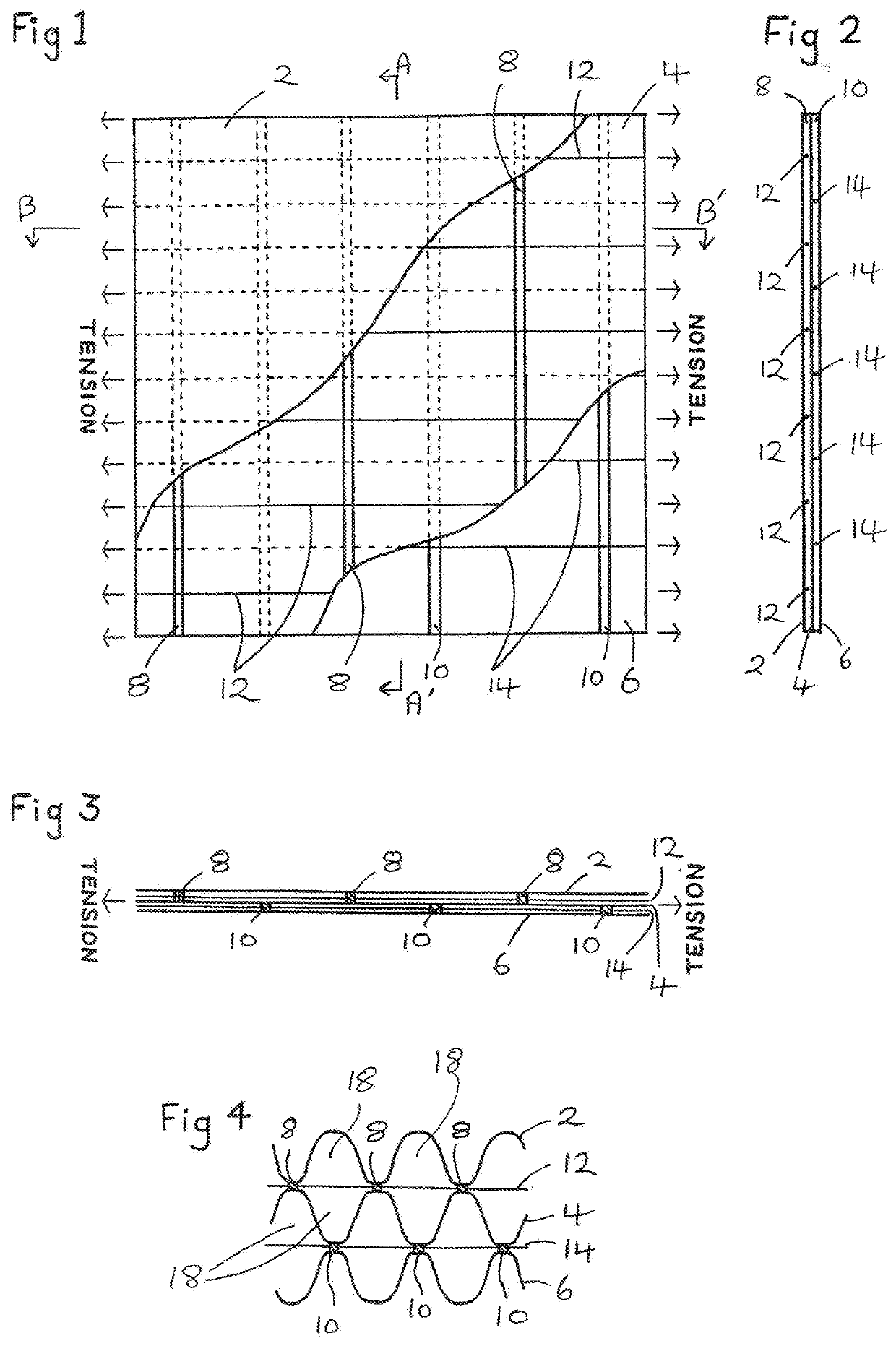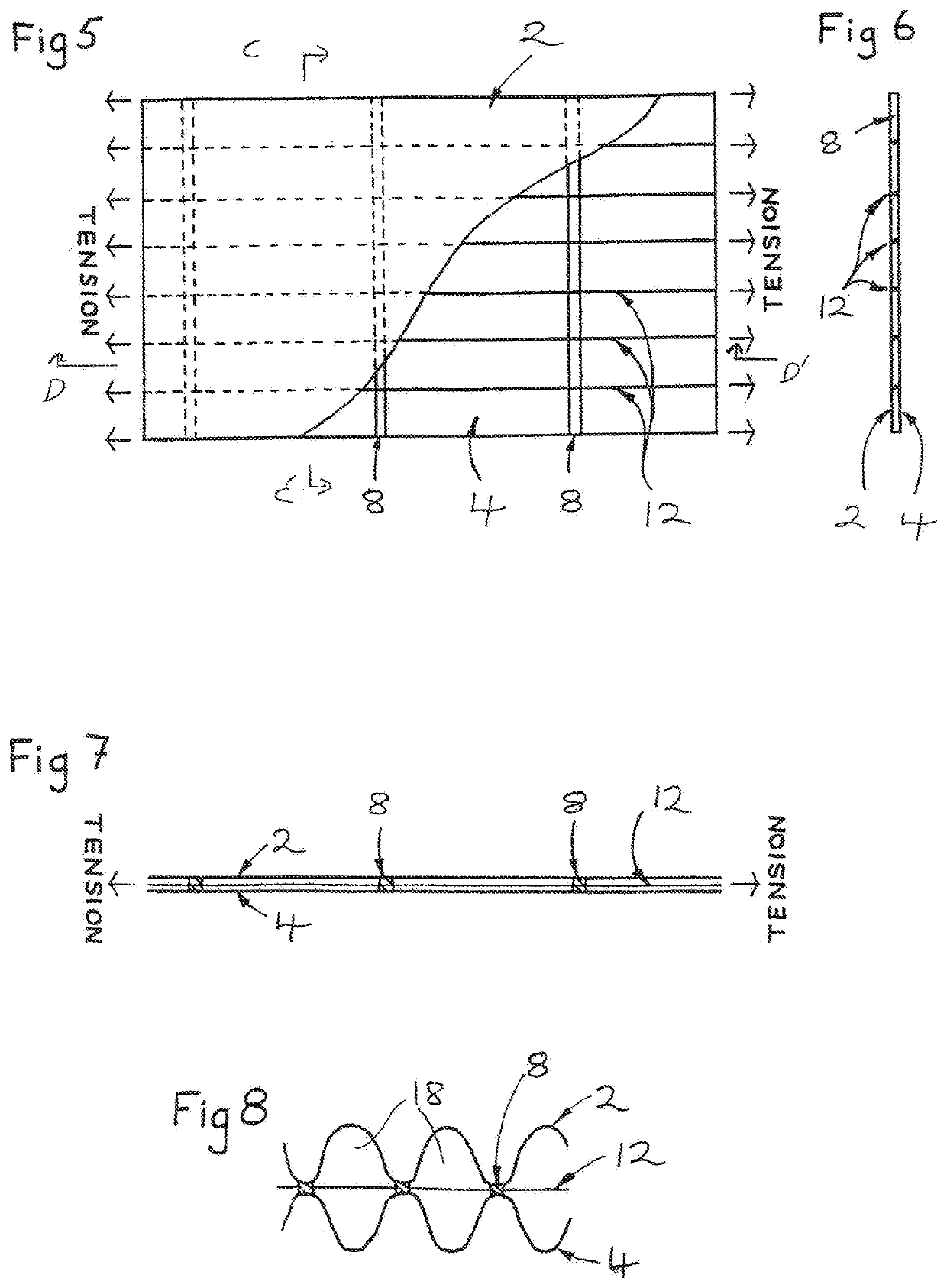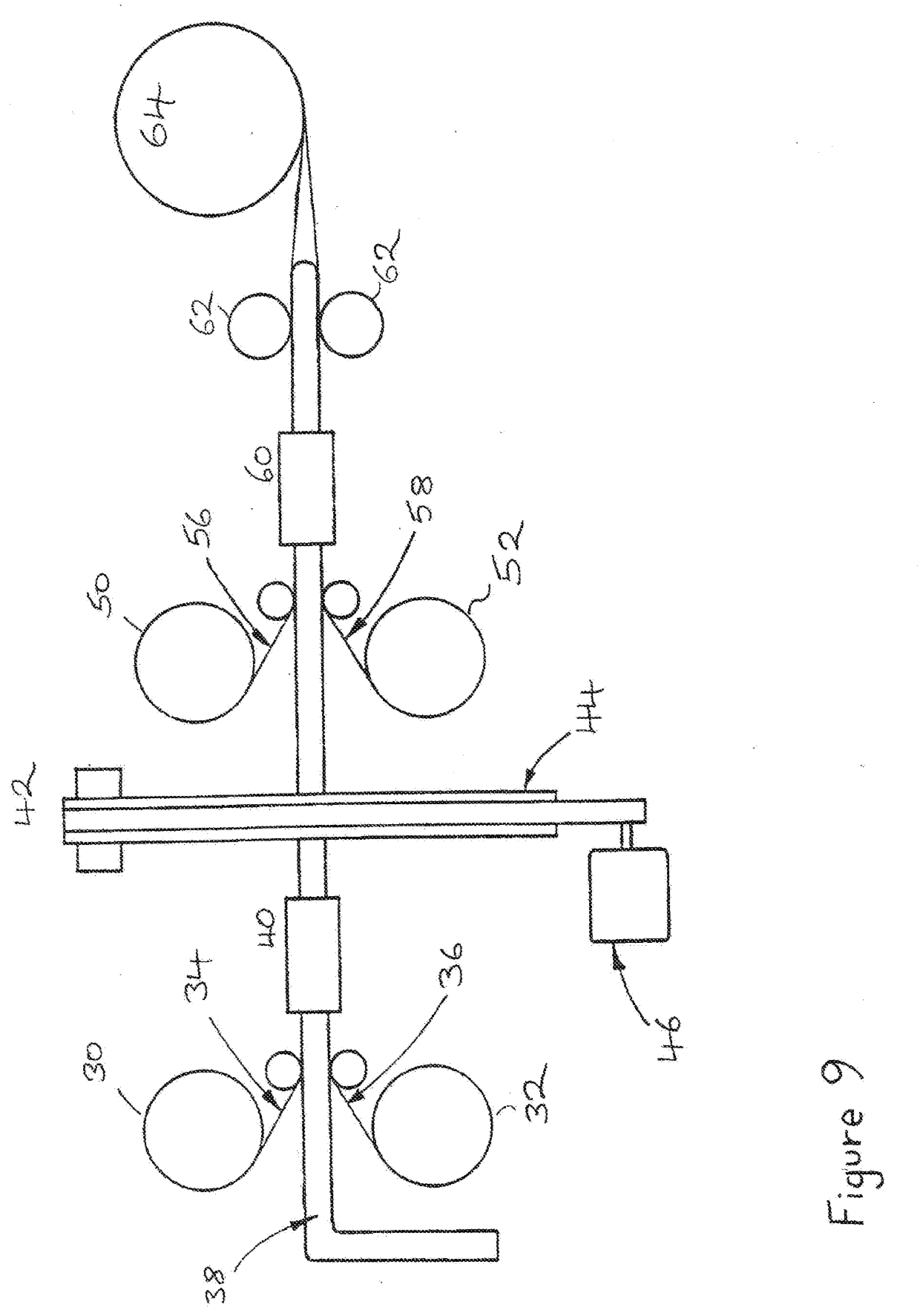Thermal Insulating Material And Method
a technology of thermal insulation material and thermal insulation layer, which is applied in the direction of synthetic resin layered products, transportation and packaging, sleeping rug, etc., can solve the problems of increased airborne particles, body cannot replace fast enough, and patients are warm,
- Summary
- Abstract
- Description
- Claims
- Application Information
AI Technical Summary
Benefits of technology
Problems solved by technology
Method used
Image
Examples
Embodiment Construction
[0021]The present invention provides unique ways of keeping patients in hospitals warm. The present invention particularly provides a method of preventing perioperative hypothermia before, during and after surgery. And the present invention provides a thermal insulating material that is used for making hospital blankets, hospital gowns, thermal wraps, and the like that can cover a patient to realize the advantages of the present invention.
[0022]According to a first aspect of the present invention, there is provided an insulating material, comprising first and second layers of primary material arranged to opposite sides of at least one elastic element, such that the insulating material can change between a first configuration wherein the at least one elastic element is stretched such that the at least one layer of primary material lies adjacent the at least one elastic element, and a second configuration wherein the at least one layer of primary material is bowed with respect to the ...
PUM
| Property | Measurement | Unit |
|---|---|---|
| Temperature | aaaaa | aaaaa |
| Composition | aaaaa | aaaaa |
| Density | aaaaa | aaaaa |
Abstract
Description
Claims
Application Information
 Login to View More
Login to View More - R&D
- Intellectual Property
- Life Sciences
- Materials
- Tech Scout
- Unparalleled Data Quality
- Higher Quality Content
- 60% Fewer Hallucinations
Browse by: Latest US Patents, China's latest patents, Technical Efficacy Thesaurus, Application Domain, Technology Topic, Popular Technical Reports.
© 2025 PatSnap. All rights reserved.Legal|Privacy policy|Modern Slavery Act Transparency Statement|Sitemap|About US| Contact US: help@patsnap.com



